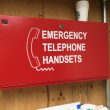The value of geo-fencing
Many countries have started deploying high-accuracy wireless location technology for advanced surveillance to fight crime and terrorism. With different applications, these same systems could be used to prepare for, and respond to, natural disasters. Key to this effort is the deployment of the kind of high-accuracy solution required to identify, locate and track citizens in the impacted areas. Ideally, such a solution would offer unique capabilities, such as geo-fencing and mass alerting. Location technologies that offer the highest accuracy can be categorized as network-based or handset/device-based, with GPS being the prime example of the latter.
One of the network-based technologies most frequently deployed by public safety is Radio Frequency Pattern Matching (RFPM). RFPM is the only high-accuracy, software-based, scalable location solution that requires no hardware changes or additions to the mobile device or the base stations. RFPM compares mobile measurements (e.g., signal strengths, signal-to-interference ratios and time delays) against a geo-referenced database of the mobile operator’s radio environment. The technology works extremely well in non-line-of-sight conditions — for example, dense urban and indoor environments — where GPS-based solutions face severe challenges. And, because it operates independent of line-of-sight conditions, RFPM is highly reliable and is ideal for the mission-critical and life-safety applications that authorities face when a disaster occurs.
To truly understand the effectiveness of high-accuracy wireless location during a disaster, let’s revisit the real-life examples of recent events outlined above and consider how preparation and response may have been different, if authorities had access to such solutions.
Forecasters knew with some certainty where and when the February 2013 nor’easter would hit; as a result, authorities could have used a mapping application to create a geo-fence — a virtual border around a user-defined geographical area, such as lower Manhattan or the New Jersey shoreline — to define the impact area. Once that was done, authorities could have indentified all mobile devices within the geo-fenced area. Next, they could have sent an e-mail, text, or voice alert that warned of the storm’s potential devastation and likely path, as well as safety instructions. This snapshot later could have been used as a record of all subscribers that were in the area prior to impact. This information could be used to help account for survivors and identify missing persons, so that emergency responses could be better focused on areas with the most potential casualties.
With such a large loss of electricity, implementation of the emergency broadcast system via television or radio is less useful; as a result, mobile devices often become the primary means of communication. But this often is a short-lived phenomenon, because mobile devices eventually drain their batteries and can’t be recharged sans power. A significant detriment of device-based location solutions is that they usually leverage GPS, which quickly drains batteries. In contrast, network-based solutions help conserve battery life, a vital concern when devices may not be recharged easily.










